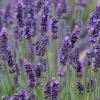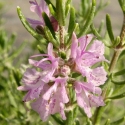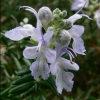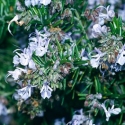Friday 3rd November, 2017
Hi
If only things would go the way you want them to!
Isn't it funny how you can start a day with an idea that just gets lost as things eventuate or, in this case, things that don't? This is not the piece I wanted to write this week but to whet your appetite we discovered the availability of some Carnations and being a plant that we haven't stocked before, thought that these might be a bit of fun to include in both the nursery and in our picking garden.There is quite some history and mythology around these old and ancient cultivated plants that I will write about in the next newsletter and I will keep you posted as to their imminent arrival and try to tempt you with pictures of
dianthus their gorgeous cousins.
Lavandula or Lavender is another group of plants that have been around for years and the English ones, that are in stock now, are perhaps my favourite. By English I refer to what I call true Lavender and are the kind that bear their flowers at the end of tall stems. These flowers are very fragrant and carry the essential oils from which lavender oils are derived and distilled. These plants are valued for so many uses. Their fragrance for cooking lavender cake and scented sugars, the flowers dry exceptionally well and can be used in dried bouquets of stuffed in pillows for a restful nights sleep. I have heard that some even place the dried flowers in sachets in their knicker drawers.
I best leave that thought there and divert by sharing that English lavenders grow to two main sizes. The
angustifolia varieties achieve some 50 cm or so in dimension and have the taller of the flower spikes, a couple of the more popular medium sized angustifolias would be
Pacific Blue and
Hidecote Blue.
If your needs are for a smaller angustifolia then take a gander at
Munstead setting the height stakes at some 30 cm and still with classic lavender flowers.
Grosso is an intermedia hybrid and in the similar style of all English lavenders with an abundance of long stems which carry dark lavender blooms.
The
English lavenders should be cut back after flowering has finished but not beyond February/March as they need to put growth on before winter arrives, and don't cut them so hard that you are cutting old wood, just shape them up ready for next season.
Now Lavender of all styles require full sun, and that means ALL day sun, and perfect drainage for them to do well.
Lavender and Rosemary seem to go hand in hand both liking the same position in the garden and ones that we don't get often are rosea and alba being the pink and white ones which are newly arrived.
Hybrid clematis I have bought some more hybrid clematis into stock as these are a bit different in that I have selected the dark ones that people are always asking for. These large flowering varieties need something to climb that won't outgrow them so they are often grown with roses. These darker varieties would look amazing popping out through any of the buff coloured Austin roses for instance
Graham Thomas,
Ambridge Rose or
The Alnwick Rose or even the paler
Wollerton Old Hall would look stunning with Clematis
Belle of Taranaki or
Melbourne Cup and lets not forget to watch the actual race on the 7th!
Philadelphus plants are leaving an amazing orange fragrance through the garden. Known as mock orange by many the different varieties all have 2 things in common, they are free flowering and highly fragrant. The white or cream flowers always look gorgeous against their mint green leaves. Ranging in size from 1.5-3 meters mature height these make an excellent addition to any garden that is close to your happy place.
Kumaras slips have just arrived so be in quick if you want some of these and get them planted as they need to be in the ground asap. Apparently its going to be wet again so perfect for getting these in this weekend.
Kumara are a great crop to grow and if you put enough in then you will have plenty to store for months later.
Prepare the soil with any ferts, compost prior to planting and don't feed them again otherwise they will put all their energy into growing tops and not tubers. Lime the soil at this point as well. Don't dig deep, just aerate the soil. Ideally they like to grow in a light soil with a pan or hard layer underneath so when they hit the hard spot they will start to grow tubers.
Make a mound around 20 cm high and plant them like a J in the soil, get the slip mostly all in the soil and just leave the outer leaves showing and keep them moist until they take off. Those brand new slips can run out of water if the soil surface suddenly turns dry. I have always planted mine at 40 to 50 cm spacing along a mound.
One growers secret for growing kumara is to not cut the runners back but rather keep lifting them so that the tops don't root into the ground. This will mean that they will put their energy into growing the tubers. My old boss knew a thing or two when we planted them through left over polythene mulch.... the poly would have stopped the tops rooting down and kept the soil much warmer as it attracts the heat.
When the plants start to die down and the tops are going yellowish, approximately 4 to 5 months then this is the time to harvest. Take care lifting these beauties out of the soil as you want them as undamaged as you can and then dry them off in the sun for a few days and they should store for up to 5 months in a dark airy cupboard.
These are available in bundles of 25 for $9.99 per bundle.
Sale trees from $20.00
We needed the room in the nursery to space all the trees and hence some of this inventory needs to be cleared. There are heaps of flowering cherries and good plants too in this sales area down the hill in the nursery.. If you are looking to plant some then come with a trailer and load up as these items are too large to courier or transport otherwise. Prices are marked
Fraximus Raywoodii or the claret ash .... such a handsome tree!!! I have some of these that are also too large to keep in the nursery, they make for a great paddock tree and of course stunning claret autumn colours. 30% off for the next 10 days but please note that these must be collected as they are too large to transport.
Prunus Mume.. the flowering apricot we often get asked for these and this year I have some. Mume has pretty dainty flowers in the spring followed by fruits that are used by most of the asian cultures whether they are pickled, steeped in sugar or blossoms and fruits used for teas and medicinal purposes.
It was great to see the new Perry cycling Bridge being opened yesterday, maybe Harry and I will get cycling along the new route to the Hamilton Gardens to see the diverse flora that has been planted along the route. Might even enjoy the exercise. Whatever you are up to this weekend hopefully it is all happening in your garden and here's hoping the rain has missed you long enough to get some joy from your plantings. If you are looking for an outing our
roses are almost in full bloom and are looking stunning, the show gardens are looking amazing and dogs are welcome on leads. Wonder round the pond and see the
Ceaser's Brother iris's for yourself amongst the silver trunks of the
flowering cherries.
Have a great weekend.
Lloyd, Harry and the Wairere Team
Make it a Wairere weekend where even GNOMES know that gardening's not a drag.













